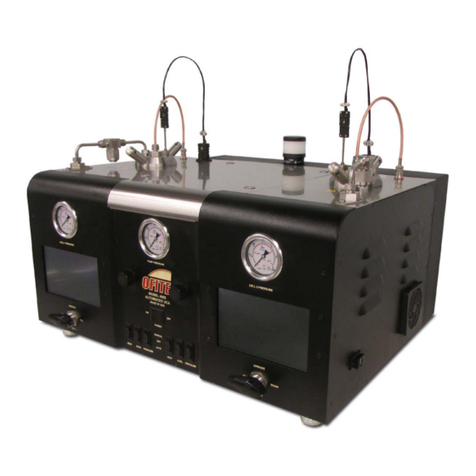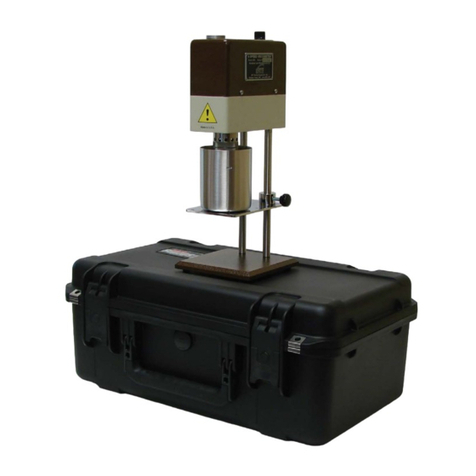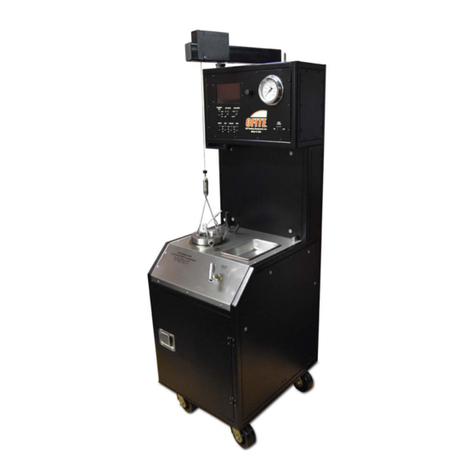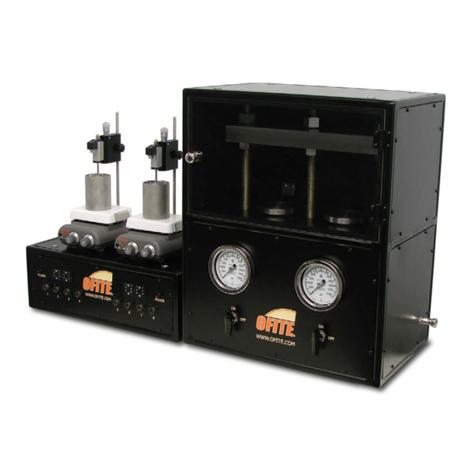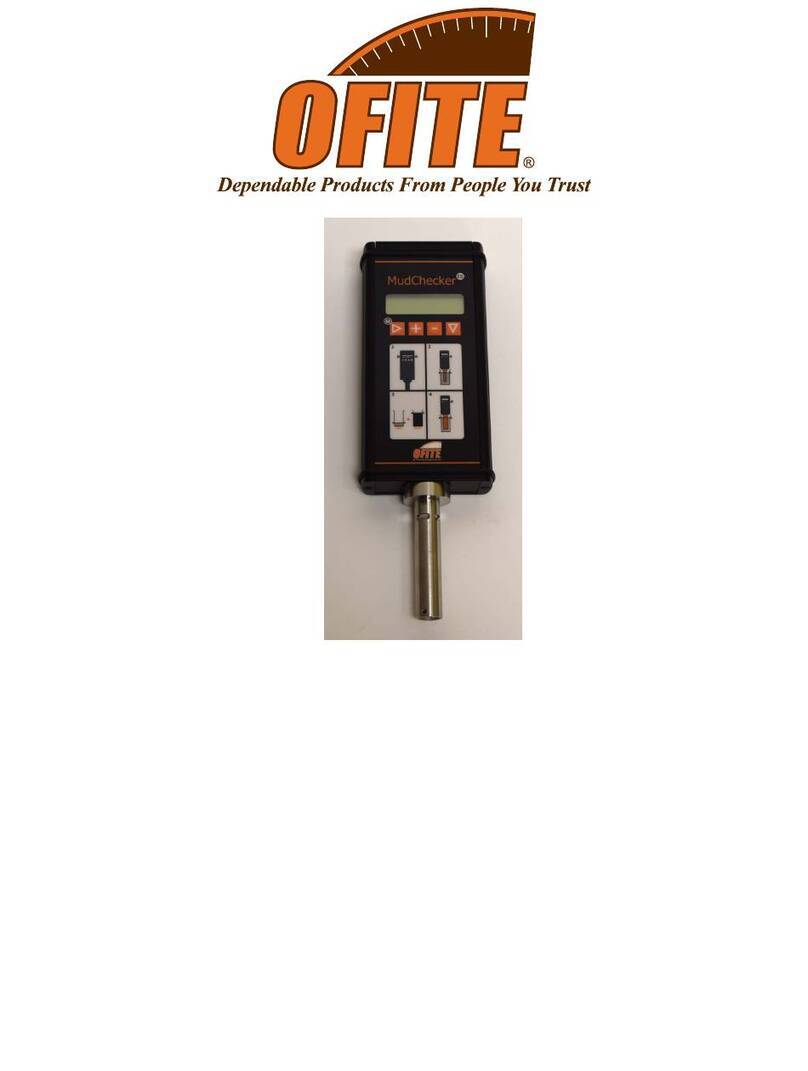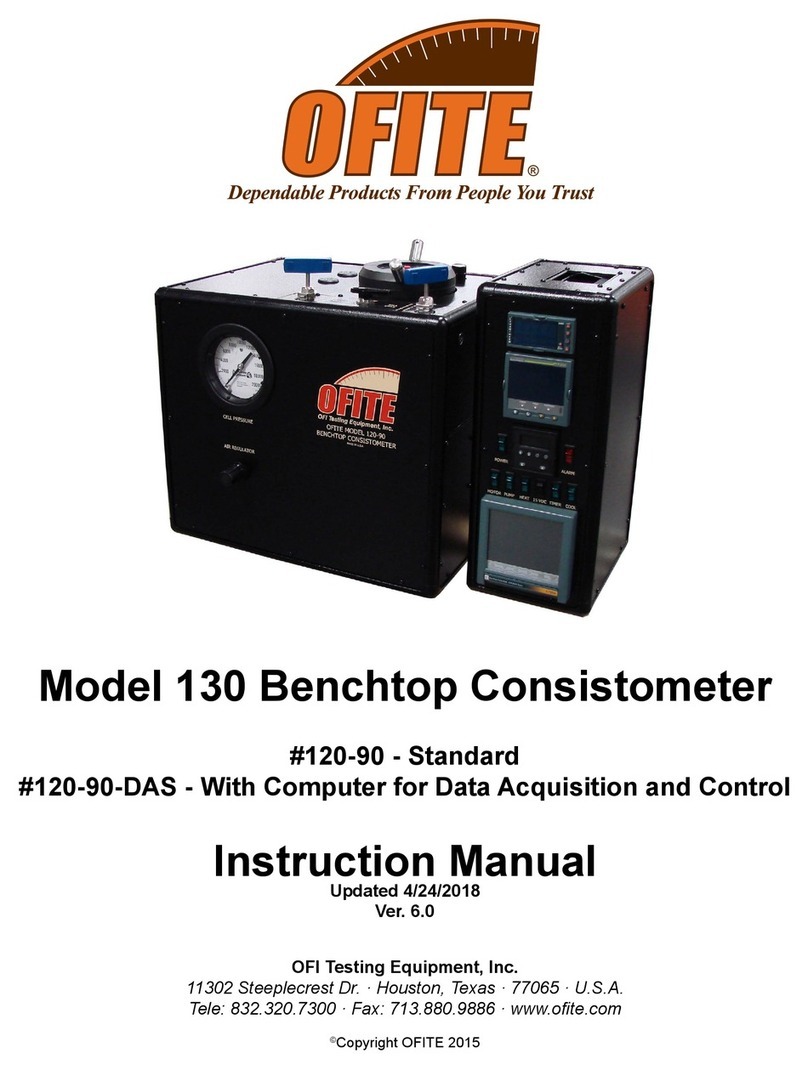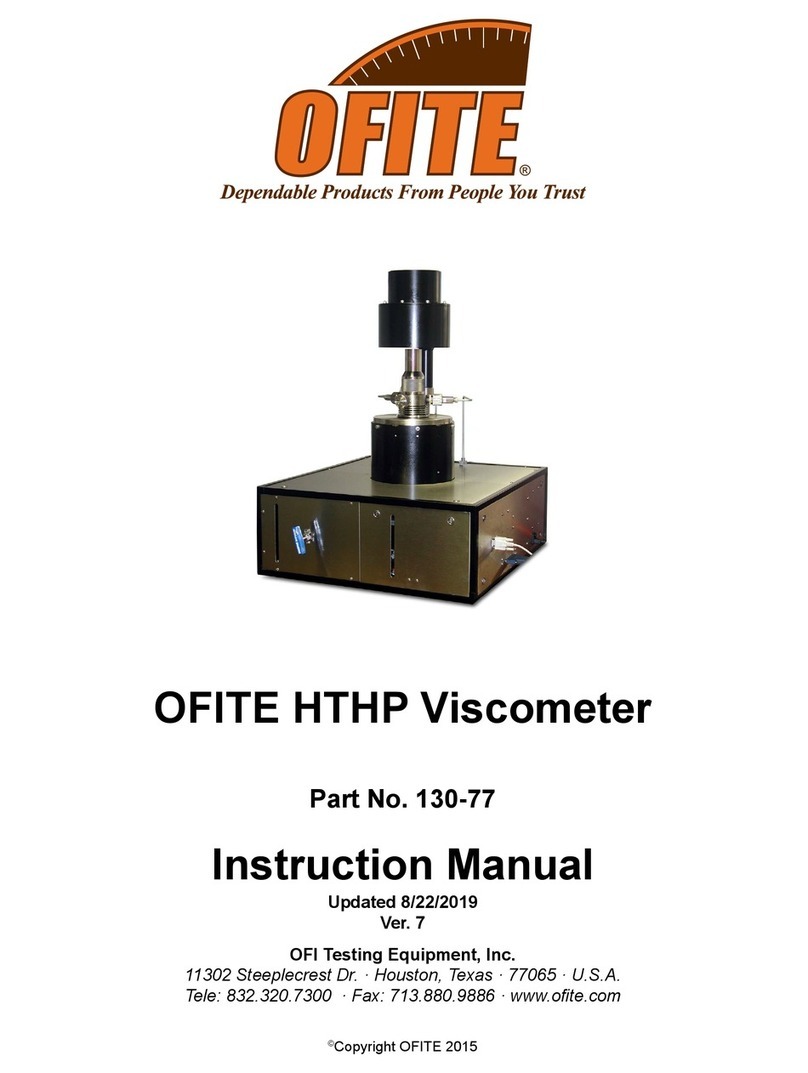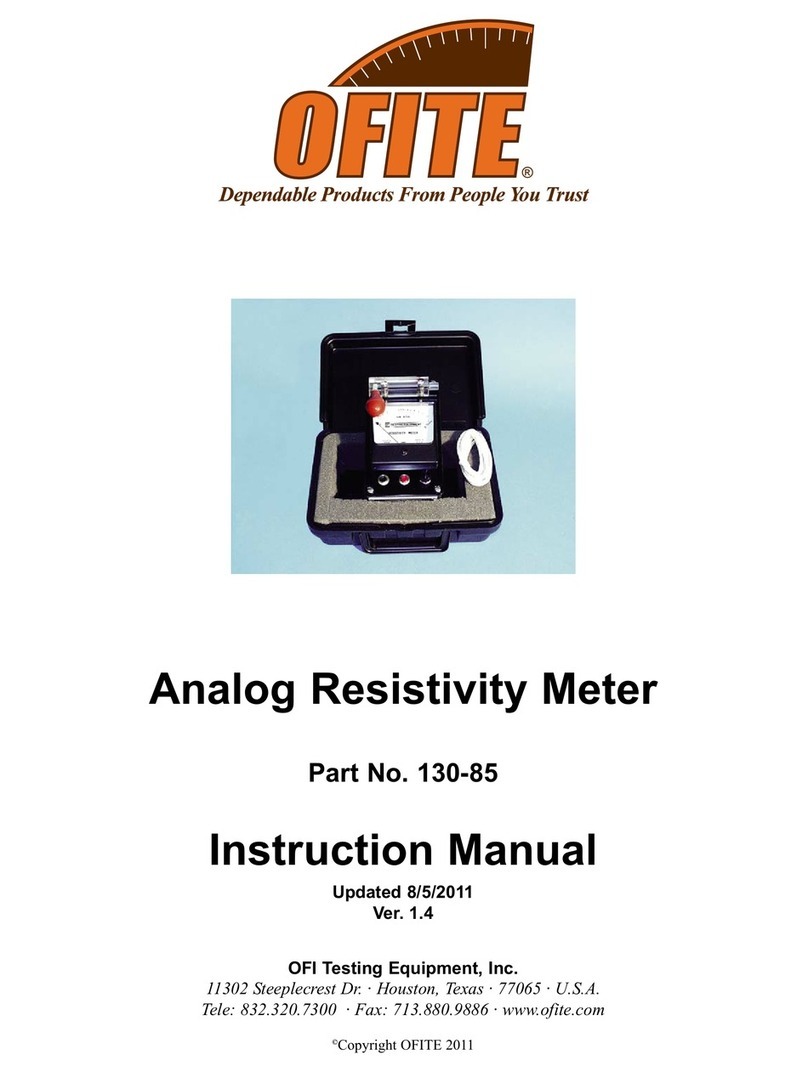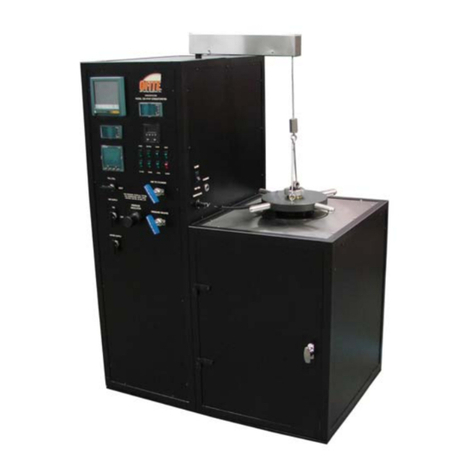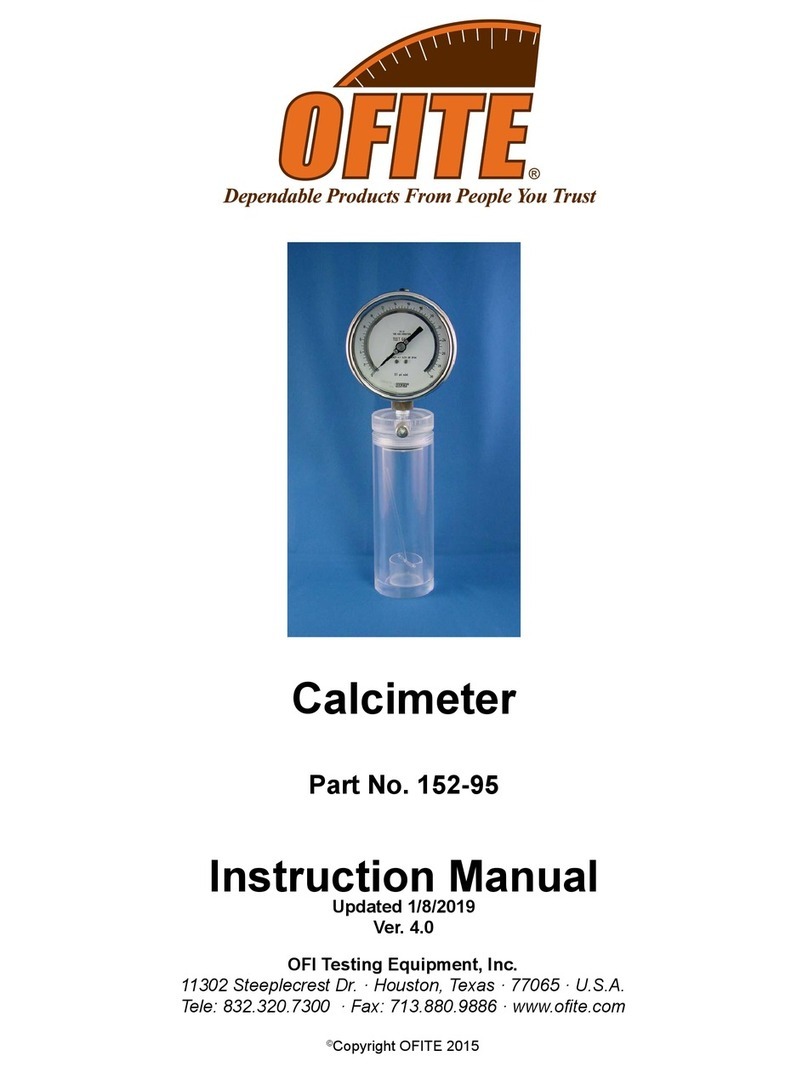
OFITE, 11302 Steeplecrest Dr., Houston, TX 77065 USA / Tel: 832-320-7300 / Fax: 713-880-9886 / www.ote.com 6
#120-508 Diaphragm Retaining Ring, Qty: 2
#120-509 Drive Disk for Slurry Cup
#120-510 Drive Bar for Slurry Cup
#120-511 Shear Pin for Slurry Cup, Qty: 24
#120-512 Drive Pin for Slurry Cup, Qty: 12
#120-513 Gasket for Slurry Cup, Qty: 6
#120-514 Drive Disk Set Screw, Qty: 10
#120-519 Slurry Cup ASsembly
#120-602 Calibration Spring, Qty: 3
#120-604 Resistor for Potentiometer, Qty: 4
#120-606 Contact Arm for Potentiometer, Qty: 6
#120-607 Contact Strip, Qty: 6
#120-608 Retaining Screw for Grounding Cable
#120-684 Bearing, Bronze, Qty: 2
#122-074-1 Fuse, 5 Amp, 5 mm × 20 mm, Qty: 5
#122-077 Fuse, 10 Amp, 5 mm × 20 mm, Qty: 5
#130-75-28 Allen Key, ", 1¾" Long, Qty: 2
#120-40-SP Spare Parts Kit
#120-001 Mineral Oil, 1 Gallon, Qty: 2
#120-10-1 Consistometer Tool Kit
#120-103 Rupture Disk, 45-50 KSI, Qty: 2
#120-202 Heater, 4000 Watt
#120-203 Thermocouple, Qty: 2
#120-204 Heaters Gaskets, Qty: 2
#120-401 O-ring for Cell Cap, Metal, Qty: 10
#120-501 Slurry Cup Sleeve
#120-502 Molded Diaphragm, Qty: 25
#120-503 Paddle Pin, Qty: 12
#120-504 Pivot Bearing, Qty: 6
#120-505 Pivot Bearing Gasket, Qty: 5
#120-506 Paddle for Slurry Cup, Qty: 4
#120-508 Diaphragm Retaining Ring, Qty: 2
#120-509 Drive Disk for Slurry Cup
#120-510 Drive Bar for Slurry Cup
#120-511 Shear Pin for Slurry Cup, Qty: 24
#120-512 Drive Pin for Slurry Cup, Qty: 12
#120-513 Gasket for Slurry Cup, Qty: 6
#120-514 Drive Disk Set Screw, Qty: 10
#120-520 Paddle Shaft, 9 ⅛", Qty: 10
#120-521 Slurry Cup with Extension
#120-602 Calibration Spring, Qty: 3
#120-604 Potentiometer Resistor, Qty: 4
#120-606 Potentiometer Contact Arm, Qty: 6
#120-607 Contact Strip, Qty: 6
#120-608 Grounding Cable
#120-684 Bearing, Bronze, Large, Qty: 2
#122-072 Fuse, 1 Amp, 5 mm × 20 mm, Qty: 5
#122-073 Fuse, 2 Amp, 5 mm × 20 mm, Qty: 5
#130-75-28 Allen Key, ", Qty: 2












